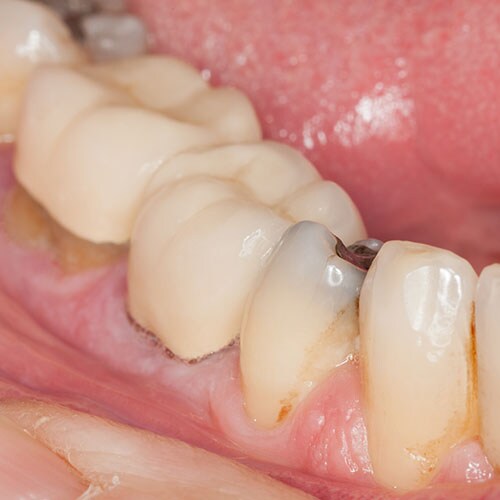As a dental student, you will have spent a lot of time creating beautiful dental restorations with your patients, spending hours in the dental clinic getting that restoration just perfect! Your patients, who are at risk for dental caries, may think their new restorations will prevent any future problems in these teeth. However, cariogenic bacteria present in the oral cavity will still metabolize fermentable carbohydrates and continue to produce acid that results in demineralization - even after you've placed all these beautiful new restorations. That can impact not only other teeth but also tooth structure at the margins of these restorations. This puts the future and longevity of your restorations and ultimately the patient's dentition at risk. Your patients may not be aware of this and think that their teeth have been 'fixed' during oral rehabilitation, so they could be in for a surprise should secondary caries develop and they require further interventions, such as more fixed restorations when, or even endodontics and ultimately tooth loss. This could lead to dissatisfied patients and loss of faith if you do not equip your patient with the knowledge on how to protect their restorations in the long term. So how can you help your patients protect these restorations so that the work you have done will last a long time?
1. Educate your patients on how dental caries develop and the importance of good oral health habits to protect simple and complex restorative work you have both invested in, as well as their dentition overall. Explain to them what fermentable carbohydrates are and that oral bacteria can use these (metabolize them) to produce acid that then causes loss of minerals from the teeth (demineralization). The explanation should then describe what can happen - dental caries (cavities) in teeth, including root areas, as well as at the margins of restorations (edges where restorations meet the tooth surface). Make sure to use language they understand and diagrams or animations to help visualize the process.
2. Give specific oral health coaching on proper oral hygiene and diet, tailoring your advice to each individual patient. Recommend a fluoride-containing toothpaste, and emphasize the importance of reducing sugar-containing and other fermentable carbohydrate intakes. Giving patients examples of what fermentable carbohydrates are will help them better understand exactly what in their diet they should change, and its important to also let them know that it isn't just what they eat, but also when, how much and frequency that matters so they should reduce the amount and the times they eat and drink these. Interdental cleaning is essential to maintain plaque-free restorative margins: recommend an oral hygiene aid which your patient can use such as floss or interdental brushes.
3. The American Dental Association recommends you perform a caries risk assessment for all patients over 6 years old, which of course includes patients who have received complex restorative work. (Note that the ADA also recommends you perform a caries risk assessment for patients 6 years of age and under.) Performing a caries risk assessment will help inform you and your patients of appropriate recall intervals, advice and needed interventions. The caries risk assessment forms from the ADA include color-coding for risk level: red (high risk), yellow (medium risk), green (low risk).
4. For patients who are at increased risk for dental caries, you should advise them to use prescription strength fluoride toothpaste to help protect their beautiful new restorations and to prevent caries. This can be at home use toothpaste, which contains 5000 ppm fluoride and has been shown to be beneficial. In addition, in-office application of 5% sodium fluoride varnish, is recommended.
For complex restorative work, the American College of Prosthodontics published Clinical Practice Guidelines for the Recall and Management of Tooth-borne restorations. These guidelines state that patients with fixed tooth-borne restorations require lifelong recall visits, professional maintenance and at-home maintenance. The guidelines include advising patients that their recall visits for a dental professional examination should occur at least every 6 months, and for patients at higher risk for complications more often. The guidelines also state that appropriate oral topical agents and oral hygiene aids should be recommended and/or prescribed for home care, including the use of 5000 ppm fluoride toothpaste.
Following these recommendations will help to protect your patients' complex restorative work, so that ultimately both you and your patients can be satisfied with the care you have provided!

